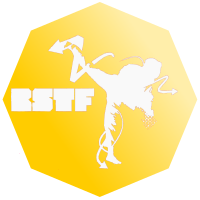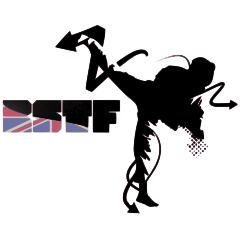Project Description
University clubs
Starting a university taekwondo club is a hugely rewarding endeavour. The club you start club may in time provide hundreds or even thousands of students the opportunity to start their taekwondo journey. University clubs are managed by an elected student committee who work with their sports department/ students’ union to run their club. The BSTF, your sports department /students’ union staff and your contracted coach will be there to support you, but the operation of your club rests with its elected club committee.
Creating a club and likely becoming one of its first committee members will give you a great deal of management experience and other skills which will serve you well – and look great on your CV. Running a university club is hard work and will take lots of time, but your students’ union, sports department and the BSTF are all here to provide assistance and advice.
Getting started
First, take a look at what sports clubs and societies already exist at your university. Learn about how clubs are constituted, and how they are funded and organised within your university. You club will need a constitution (your university will probably provide you a template, or search for the constitution of an existing and similar club) in which you set out your aims and the processes by which the club will be managed.
Second, take a good look at your student union website for guides on opening a new club and contact your club development officer or athletic union president to discuss your plan with them, ideally arrange a face-to-face meeting with them. There will be paperwork involved, and there is a slightly different process at every university, but most departments have staff or volunteers who will be able to help.
Thirdly, find out what all of the key dates are to complete all of the different stages of the application process and create a plan to get everything done and bring other people on board to help you. You will have a much better chance of success if you start as you mean to go on, by being methodical and managing your time well.
The application process
The exact process varies between universities, but the application process is typically along these lines:
Before meeting with your athletic union president/ sports development officer you should get a draft of the important paperwork completed. This usually includes:
- The aims and objectives of your club; these will eventually be added to your constitution.
- The names of at least 3 people who will become your club’s first committee (usually the president, treasurer and secretary). These volunteers will in future be elected by your members. Be sure to read up on the role, responsibilities and resources available for club committee members at your university.
- A list of students – there is usually a minimum number of 25 students, but this varies by university – who have committed to joining your club, their contact details and their membership fees. It is best that these potential new members are instructed to pay the fees to your students’ union, who will return them if you are unsuccessful in your application.
- A completed risk assessment for Taekwondo training.
- A basic plan and budget for the first 2 years for your club, focusing on things like:
- How many sessions per week you would like to train
- An operating budget, to include revenue (e.g., club membership fees and training fees paid by club members, competition and travel fees paid by club members, any grant funding from your students’ union/ sports department, sponsorship and fundraising funds etc.) and expenditure (e.g., coach salary, competition entries and travel fees, promotional materials, your club’s BSTF annual institution membership fee, a purchase and replacement fund for training equipment etc.)
- Recruiting and contracting a coach.
- A plan and annual schedule for gradings, training events and competitions you’d like to attend.
- A plan to advertise your new club to potential student members
- A completed new sport/club affiliation application form which you can get from your athletic union/ sports department.
Then you’ll need to set up a meeting with your athletic union president/ sports development officer – be sure to ask about:
- Feedback on your plan
- The procedure at the Students’ Union Council that may decide to admit your new club, including dates, what to prepare and what to bring with you
- Procedures and rules for recruiting coaches
- Procedures and rules for electing club committees
- The level of funding that may or may not be available to clubs
- How your Students Union finance office works
- How to make room bookings for training
- Setting up a permanent club email address e.g., taekwondo.club@your-university.ac.uk
- What information they will need from you for your Students’ Union website and how your club will receive inquiries
- What optional and mandatory administrative training your Students’ Union provides for club committee members
At most universities you’ll then be invited to the Students’ Union Council/ Societies Council – here you will need to to make your case for the inclusion of your new club. Councils will usually only meet a few times a year, so be sure to get everything prepared well in advance. Remember that there will be limited pot of funding available between clubs, so you will need make a strong case for your new club.
Starting training sessions – If the Council approves your new club either a student instructor may begin teaching classes (once they have purchased the necessary instructor indemnification) or your athletic union/ sports department may begin an open recruitment process for an external instructor.
Please contact us directly at any time for free, impartial advice regarding an application to start a new Taekwondo club.
Appendix
Recruiting coaches
University clubs are managed by an elected student committee who work with their sports department/ students’ union to run their club. The coach is typically a student athlete coach or a contracted employee of the club and/or university. This is an important distinction from martial arts and sports clubs outside of universities which are often owned and operated by their coaches.
Some university sports departments/ students’ unions encourage the club committees to find and pay their coach(es) directly while providing oversight of this process, while others will employ a contracted coach directly and have their own processes to select contracted coaching staff on behalf of clubs. Get in touch with your sports development officer or athletic union president to discuss the recruitment options at your institution.
The relationship between the coach and club is a hugely important one, and a harmonious and constructive partnership should be sought at all times. Coaches are contracted as experts in taekwondo, and are ultimately responsible for delivering the teaching syllabus, training sessions and coaching. Club committees are responsible for the administration and operations of their club, including all financial decisions. The most effective clubs have a clear division of responsibility between such roles, while encouraging open communication between all of their members, committee and coaching staff. Any conflicting views are best handled by maintaining open communication and by consulting with your sports development officer /athletic union president, they will usually be able to help you resolve any issues promptly.
Writing aims and objectives
Definition – This will be “an open-for-all student Taekwondo sports club” as clubs must provide activities open to all members of the Students’ Union and that they be able to participate in the activity without restrictions.
A unique society – You should not plan to start a new society with aims and objectives that are similar to – or the same as – those of a society already affiliated to your Students’ Union; these applications will usually be rejected outright, so check to see if your university already has a Taekwondo club.
Name your club – The name of your club must reflect its aims and objectives and not be linked to an external organisation, person, or brand. Keep it simple, for example use University of Fotheringhay Taekwondo Club and not Super Awesome Dragons Taekwondo at the University of Fotheringhay and other locations.
Your Aim – The club must have at least one aim. This aim should describe the intended purpose of the society, for example ‘To unite all members of the Students’ Union interested in Taekwondo”.
Your Objectives – The objectives should reflect how you intend to achieve the society’s aim. For example, ‘To provide regular training and to attend competitions and gradings to facilitate students’ physical education in the sport of Taekwondo’
Membership – Membership must be open to all members of your student union a the fee to join the club should reflect the activities you will offer. Accounts must be published at your AGMs so that members can see how their money has been spent. The typical membership fee varies depending on what is included with membership – only membership, or other items such as dobok, sparring equipment, or a pass for a term of sessions included? Typical training fees within university clubs are £3-5 per session.
Third party memberships – Your club members might also purchase one or more third party memberships to access that organisation’s training sessions, grading services or other events. Such memberships are not required typically for your club members only attending their own university club training sessions, and are never required for British Student Taekwondo Federation events and competitions for which you are already insured. Be immediately wary of any individual who claim you ‘must’ have membership of a particular organisation train and ask your sports development officer for advice. Third party memberships may be a useful option to provide those who purchase them access to a range of events and other useful services from a provider.
Job descriptions – All committee positions created require a role descriptions which define the officer’s responsibilities and allow the role to have continuity between years. As a club and committee grows the complexity of managing it does too, but remember it is these big challenges provide the experiences your future employers are really looking for.
Quorum – Quorum is the minimum number of members that must be present at a general meeting (AGM or EGM) to make proceedings valid. This can be set to suit the number of members in the society. The recommended quorum for a meeting is whichever is the larger of 20 full members (only full members can vote) or 75% of your full members.
Changes to your constitution – All constitutional amendments usually need to be ratified by your students’ or athletic union and also be passed by e.g., 67% of your members at your Annual General Meeting.




































